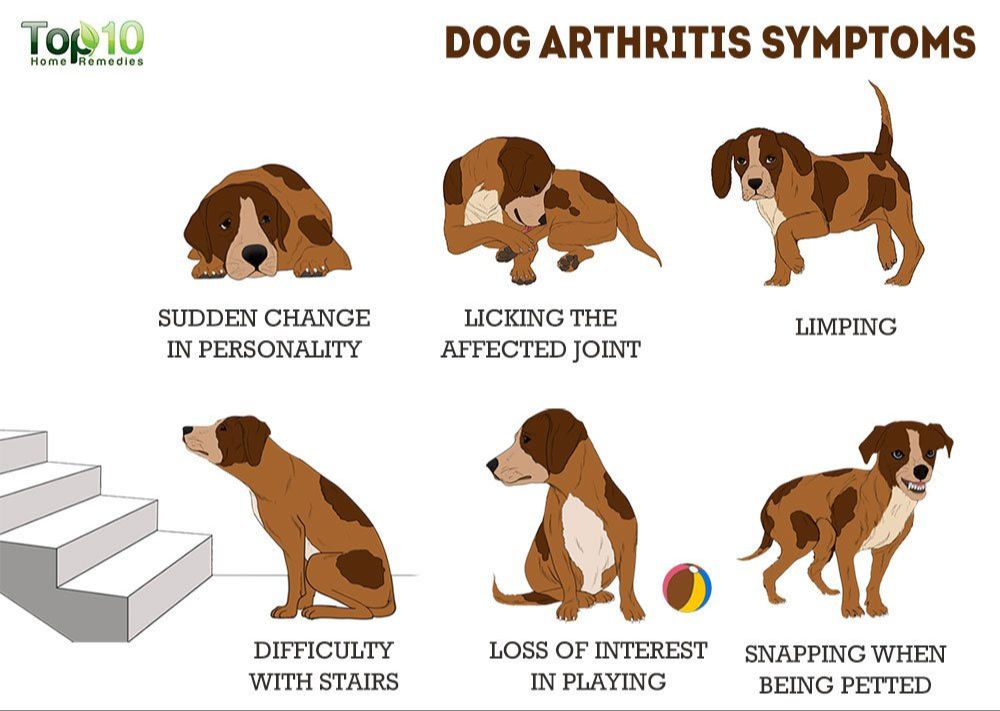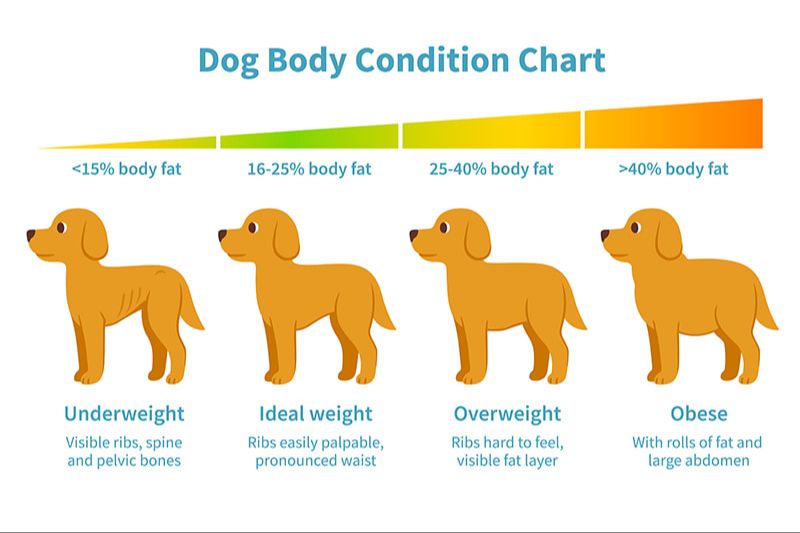What is End Stage Arthritis in Dogs?
End stage arthritis in dogs refers to the most advanced stage of osteoarthritis, a degenerative joint disease. It involves severe deterioration of the cartilage and bones within joints, leading to extreme pain, inflammation, stiffness, and loss of mobility.
The main difference between regular arthritis and end stage arthritis is the degree of joint damage and the severity of symptoms. In end stage arthritis, the cartilage is almost completely worn away so the bones are rubbing together. This causes chronic inflammation, deformity, and crippling lameness.
The joints most commonly affected by end stage arthritis in dogs are the hips, elbows, knees, and spine. However, any joints can be impacted. The symptoms are often debilitating at this stage.
Symptoms of End Stage Arthritis
End stage arthritis in dogs can cause some of the worst and most extreme pain in dogs. As the arthritis progresses to the final stages, dogs will exhibit a number of severe symptoms including:

Much more limited range of movement. Dogs will have great difficulty moving around and may appear almost immobile at times. Simple actions like getting up, laying down, and walking can become excruciatingly painful.
Being restless when standing due to pain and discomfort. Dogs will constantly shift their weight and readjust their stance trying to find a comfortable position to stand in, but are unable to find relief.
Shifting their weight away from the arthritic leg. Dogs will avoid putting weight on the affected leg(s) and limp or hop around on their good legs.
Muscle atrophy in the affected legs. Lack of use causes the muscles in arthritic legs to waste away and visibly shrink.
Inability to stand or walk at all in severe cases. Dogs may drag their legs or be unable to get up without assistance. They may refuse to walk and need to be carried.
Aggression or acting out due to severe pain. The constant and intense pain can cause even the most docile dogs to snap, growl, or bite when touched.
Causes and Risk Factors
There are several factors that can increase a dog’s risk of developing end stage arthritis:

Old Age – As dogs get older, the cartilage in their joints slowly deteriorates over time. Most dogs begin developing arthritis around 8-10 years old. The older the dog, the more likely their joints have significant wear and tear.
Obesity – Carrying excess weight puts increased stress on a dog’s joints. The extra pounds strain the cartilage and accelerate its breakdown. Obese dogs have a much higher risk of developing arthritis.
Genetics – Some dog breeds are prone to arthritis because of genetic factors. Breeds with conformational issues like hip dysplasia are at higher risk. Labrador Retrievers, German Shepherds, and Golden Retrievers frequently develop arthritis.
Joint Injuries – Prior injuries to joints like ACL tears, fractures, or dislocations can lead to arthritis later on. The injury causes damage to the joint and alters its mechanics, resulting in cartilage degeneration.
Diagnosis
There are several ways a veterinarian will diagnose end-stage arthritis in dogs:
Veterinary Exam – The vet will perform a thorough physical exam, looking for indications of arthritis such as pain, swelling, stiffness, lameness, and limited range of motion. They may manipulate joints to check for pain and reduced mobility. Specific orthopedic tests can help determine which joints are affected.
X-rays – Radiographs allow the veterinarian to visualize joint structures and look for signs of arthritis like bone spurs, narrowed joint spaces, and bone changes. X-rays can determine the extent and location of arthritis damage.
Arthrocentesis – Collecting and analyzing joint fluid can confirm severe inflammation and arthritis. The vet inserts a needle into the joint space and draws out fluid. Increased white blood cell count indicates arthritis. This procedure also removes any inflammatory fluid buildup in the joint.
Advanced imaging like CT scans or MRI may also be used to evaluate joint damage in end-stage arthritis cases. Bloodwork helps rule out other potential causes of symptoms.
Sources:
https://vetgenpharmaceuticals.com/blogs/education/end-stage-arthritis-in-dogs
Treatment Options

There are several ways to help manage pain and improve quality of life for dogs with end stage arthritis:
Pain Management Medications
Nonsteroidal anti-inflammatory drugs (NSAIDs) like Rimadyl, Deramaxx, Previcox, and Metacam can help relieve arthritis pain and inflammation. However, NSAIDs can have side effects like gastrointestinal upset and liver or kidney damage, so veterinary monitoring is essential. Short-term steroids like prednisone may also help, but also have significant side effects with long-term use [1].
Joint Supplements
Supplements containing glucosamine, chondroitin, and omega-3 fatty acids may help joint health and mobility. Anti-inflammatory botanicals like turmeric may also be beneficial. Talk to your vet before starting supplements, as quality and dosing are important [2].
Exercise
Low-impact exercise like short walks, swimming, or massage can maintain joint flexibility and range of motion, without putting excess strain on painful joints. Keep sessions short to avoid overexertion. Ramps, harnesses, or mobility carts can make exercise easier if needed.
Weight Management
Extra weight puts more stress on painful joints. Maintaining an ideal body weight via a joint-friendly diet and exercise can make a significant difference in mobility and comfort.
When to Consider Euthanasia
As arthritis progresses to an end stage, pet owners may need to consider euthanasia for their dog. This is often one of the hardest decisions a pet owner will ever have to make. There are several factors that indicate euthanasia may need to be considered:
Severe, unmanageable pain – If your dog is in constant pain that cannot be controlled with medication or other therapies, euthanasia may be the most humane option. Dogs in severe chronic pain often have a very poor quality of life.
Dog’s quality of life diminished – Consider your dog’s overall happiness and ability to enjoy normal activities. If your dog can no longer take joy in their life or participate in activities they once loved, it may be time to say goodbye.
Advanced age – While age itself is not a determining factor, elderly dogs with end stage arthritis often suffer from multiple age-related illnesses on top of their joint disease. This can greatly diminish quality of life.
No response to treatment – If your dog’s arthritis is not responding to the typical treatments like NSAIDs, steroids, supplements, therapy, or surgery, euthanasia may need to be considered to prevent further suffering.
It’s critical to consult with your veterinarian when making this decision. Together you can determine if your dog’s arthritis has truly reached an end stage where quality of life cannot be maintained. While heartbreaking, euthanasia may be the final act of love you can offer your pup.
Caring for an Arthritic Dog
Providing orthopedic beds and ramps can greatly improve comfort and mobility for dogs with arthritis. Orthopedic beds have memory foam or egg-crate mattresses designed to cushion pressure points and relieve joint pain. Look for beds that are flat with raised edges for easy entry and exit. Ramps allow arthritic dogs to avoid climbing stairs and lessen the impact on their joints. Strategically place ramps and orthopedic beds around the house so your dog always has easy access.
Keeping your dog at an ideal weight is also very important. Excess weight puts more strain on the joints and can worsen arthritis pain and inflammation. Work with your vet to determine a healthy weight target and adjust your dog’s diet and exercise routine accordingly. Gradual weight loss is best to avoid any extra joint stress. Get tips from your vet on the optimal diet, calorie intake, and foods for an arthritic dog.
Regular, low-impact exercise can benefit arthritic dogs by strengthening muscles, increasing flexibility, and reducing weight. Focus on low-impact activities like short walks, swimming, or gentle play. Avoid high-intensity exercise like jumping or roughhousing which could further damage joints. Adjust the type and duration of exercise based on your dog’s pain levels and mobility. Aim for multiple short activity sessions throughout the day rather than one long session.
Prevention
There are several ways to help prevent or delay the onset of end stage arthritis in dogs:
Maintaining a healthy weight is crucial, as excess weight puts more strain on joints. Keeping your dog lean can significantly reduce arthritis symptoms. Follow your vet’s recommendations for an optimal weight and body condition score for your dog.
Joint supplements containing glucosamine and chondroitin may help protect cartilage, improve joint lubrication, and reduce inflammation. Talk to your vet before starting any new supplements.
Appropriate exercise that maintains muscle tone and joint flexibility without overexertion can also help prevent arthritis. Low-impact activities like swimming and short, frequent walks are ideal. Avoid high-intensity exercise that puts excessive strain on joints.
Other prevention tips include providing orthopedic beds and ramps, managing injuries/lameness early, monitoring for signs of arthritis, and scheduling annual vet exams. While arthritis cannot be cured, early intervention and proactive management can dramatically improve your dog’s comfort and quality of life.
Outlook and Prognosis
Arthritis is a chronic, progressive disease that cannot be cured, only managed. As the arthritis advances, it can greatly impact a dog’s mobility and quality of life. There are treatments available to minimize pain, slow progression, and improve joint health. But there is no reversing the damage already done to the joints.
Dogs can often live with managed arthritis for years. But owners should regularly monitor their pet’s condition. Increasing immobility, pain, and loss of enjoyment of normal activities can indicate end stage arthritis. At this point, quality of life becomes the main focus. If the dog struggles with basic movements and no longer seems to take pleasure in its day, euthanasia may need to be considered, as hard as that decision can be.
The prognosis for an arthritic dog depends on many factors like age, underlying cause, speed of progression, and responsiveness to treatment. With early intervention, lifestyle adaptations, pain management, and joint supplements, dogs can enjoy many good years even after an arthritis diagnosis. But the disease will advance, and owners must put their pet’s comfort above all else. Regular vet checkups are key to monitor disease progression and make appropriate adjustments in care.
When to See a Veterinarian
If your dog is showing signs of severe arthritis or mobility issues, it’s important to take them to the veterinarian as soon as possible. Some signs that it may be time for a vet visit include:

- Difficulty standing up or walking – If your dog is struggling to get up, seems stiff or sore when walking, or is limping, this indicates they are likely in significant pain. Seeking veterinary care can help diagnose the cause and severity of arthritis.
- Personality changes from pain – Dogs in chronic pain from arthritis may seem irritable, aggressive, anxious, depressed or withdrawn. Sudden personality changes like these warrant an exam to check for underlying physical causes.
- Reluctance to exercise or play – If your formerly active dog no longer wants to go for walks, play fetch or participate in activities they used to enjoy, arthritis pain may be to blame. The vet can provide medication to help manage discomfort.
The earlier arthritis is diagnosed and treated, the better the long-term outlook will be for managing pain and joint health. Don’t delay in scheduling a veterinary visit when these concerning signs of advanced arthritis appear in your dog. With proper care, many dogs can still live happily with arthritis.